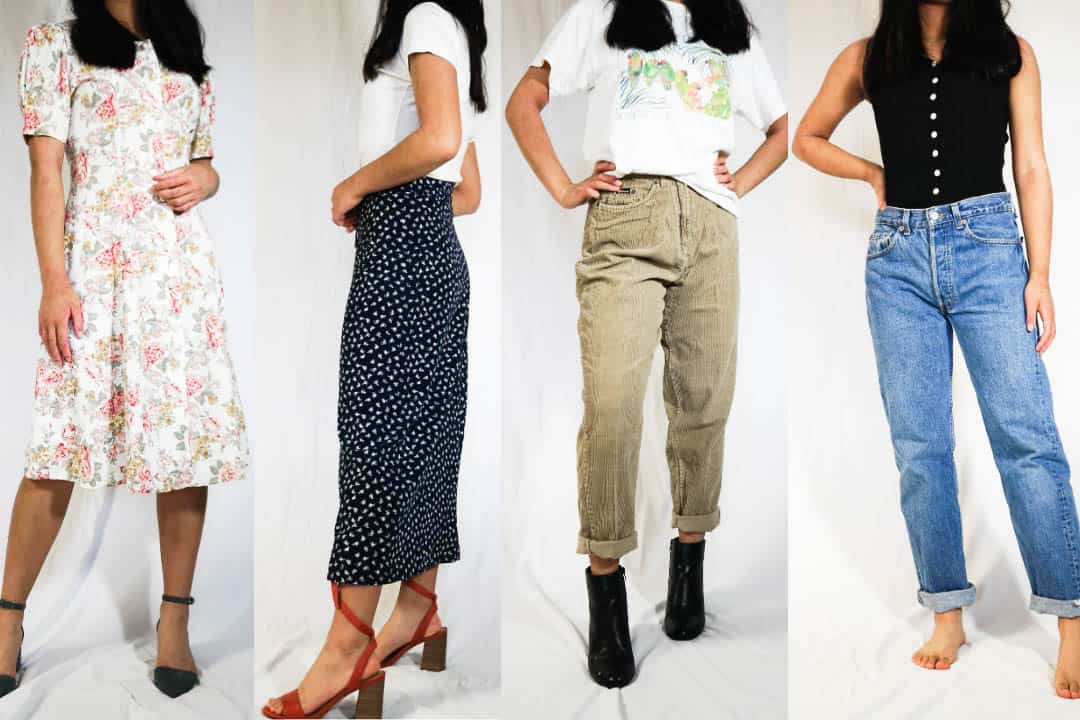Mod styles, Peter Pan collars, bell bottoms, clogs — vintage styles are making a comeback with flying colours.
The ‘vintage’ label itself is markedly subjective, as its definition varies wildly according to individual experience. While a ’90s sheer dress might feel vintage for a 2000s babe like myself, it understandably would signify something entirely different for someone born in an earlier decade. In an article for The Guardian, Ellie Violet Bramley wrote that “the lines blur between secondhand and vintage.” The two are sometimes referred to synonymously.
However vintage may be defined, its widespread favour with consumers and designers is both undeniable and baffling. But, in light of the shifting perceptions and attitudes of fast fashion’s largest target market, this renewed craze for antiquated designs begins to make sense.
Young adults are particularly environmentally conscious, and Generation Z, in particular, makes up a generous proportion of the global fashion consumer demographic. Respect for the environment and ecological awareness are values that hardly align with an industry with as gargantuan a carbon footprint as that of fast fashion. As an estimated 37 kilograms of textiles are thrown out per Canadian every year, people are beginning to question traditional vertical production methods.
Fast fashion is, therefore, experiencing pushback from this young, influential demographic while thrifting is becoming in vogue. As consumers buy secondhand items, they’re running into styles of decades gone by, reconnecting with their appeal, and reinvigorating them with life. Purchasing cultured, out-of-the-box pieces at a fraction of the original price supports sustainable industry practices and provides an opportunity to show off an intuition and sensibility for fashion.
Of course, the influence of vintage celebrity outfits worn on red carpets cannot be overstated. Many fashion critics argue that Julia Roberts kickstarted the obsession with secondhand fashion when she wore that iconic black and white Valentino dress at the Academy Awards in 2001.
Since then, the stigma surrounding thrifting has been steadily fading. Countless vintage designs have been featured on runways and magazine covers, notably by British Vogue. Not only is vintage often more affordable and eco-friendly, but it can also be unexpectedly glamorous.
The aesthetic aspect of vintage fashion is especially pertinent on Instagram, where individuality is a coveted attribute. There may very well be no better way to fulfill that ubiquitous desire to be different from the rest than to own articles of rare, quirky, vintage clothing. Admittedly, it’s an oddly satisfying feeling, knowing that no one else in the world could have woken up in the morning and picked out an outfit that’s a duplicate of your own.
At a deeper level, however, wearing vintage awakens our inner child and allows us to imagine what the world was like when the clothes we now deem old-fashioned were then cutting edge. We form secret friendships in our minds with those of bygone eras from whom we inherited our garments.
As millennials and Generation Z, perhaps we fantasize about a time — their time, in the ’70s — with a simpler, slower pace of life. Or maybe we simply idealize those times in history that we never had a chance to witness firsthand.


